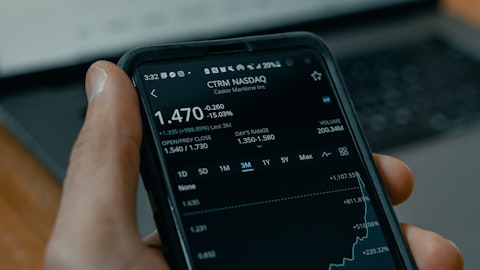There are a couple of initiatives that we are pursuing. Obviously, we will find opportunities as the year goes along to continue to emphasize the message around affordability, but also restrained and very, very careful management of inventory for us is very important and some initiatives that we are driving in terms of an updated distribution system that allows for faster replenishment, but also a lot more control in terms of how much inventory is out there is an important part of a value story, which is relevant to us, to our dealers and to our consumers in terms of the product holding its value over time. And then the third initiative that I would highlight is, of course, this is our anniversary year. It is very important not only for the bikes, but also for the apparel, which is early indications would say, has been extremely well received, but also all of the activities around engagements and consumers that involve our dealerships as well as our headquarters and all of the activities that Jochen mentioned in Milwaukee.
So those, I think, are three big pillars that we will be pushing forward this year.
Robbie Ohmes: Sounds great. Thank you.
Operator: The next question is from Fred Wightman with Wolfe Research. Your line is open.
Fred Wightman: Hey guys. Good morning. Thanks for the question. I was hoping you could just unpack the dealer inventory numbers that are in the slides. I know that you’re still down pretty big versus 2019. But if we just look at that sequentially, it does look like it built and then you’re obviously dealing with model year changeover as well. So, can you just sort of unpack where units are, where you saw that sequential build and sort of how we should think about that going forward?
Jochen Zeitz: So, we have 34,000 units in the network now. That’s the dealer inventory level. That’s 15,000 more than in 2022, which, as was an extremely low level of inventory at the time. If you look at this from a historic perspective, that level is 60% of 2019. So pre-pandemic, 60%. So it’s still an extremely healthy level. Thankfully, we have more inventory in the network right now. And we are finally getting back to a better spot. So overall, I’d say, we are good in terms of inventory and that should help us to start the riding season in a healthier position than we have previous year.
Operator: The next question is from Joseph Altobello with Raymond James. Your line is open.
Joseph Altobello: Thanks. Hey guys. Good morning. I guess first question, I’ll cut right to the chase. There’s a lot of moving parts here. But if we look at your guidance this morning, I think it equates to roughly EBIT guide for 2023 of around $850 million to $875 million. So if you could clarify that for us, that would be great. And maybe secondly on LiveWire. The estimate coming into this year or at least what you gave us back in December of last year, 2021 was about 7,000 bikes. You’re looking at about, call it, 2,000 bikes this year. Why the slow start? And how quickly or how willing would you be able to kind of pivot if you don’t see demand start to materialize in that business? Thanks.
Gina Goetter: Hey, Joe. Good morning. This is Gina. So on your first question here, you’re in the right zone on overall EBITDA guidance when you kind of add up all the three different segments. So, I would say you’re thinking about that generally right. And I’ll turn it over to Ryan for LiveWire.





